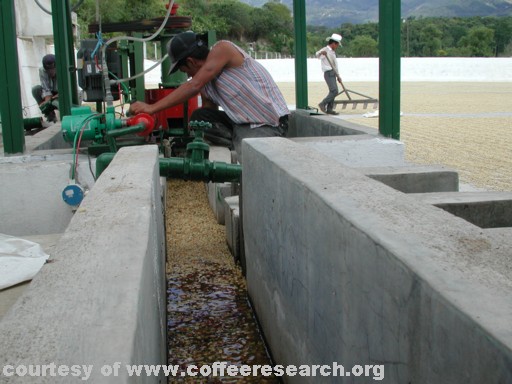Dry processed Coffee
The dry processing of coffee is the oldest form of processing and also requires very little mechanized tools. With dry processing, the whole cherry is dried. Depending on the size of the plantation, the available resources and the desired quality, the methods of dry processing differ.
The three basic steps are:
- Cleaning
- Drying
- Hulling
Cleaning

Firstly, the harvested cherries are sorted and cleaned to separate the damaged, immature and overripe cherries and to remove dirt, earth, branches. This is mostly done by hand using a large sieve. The mature cherries can also be separated by flotation in channels in the vicinity of the drying space.
Drying

The next step is drying the coffee cherries. The Beans are spread on large concrete terraces or on elevated mats and left for drying in the sun. In order to ensure an even drying, the beans are turned regularly with a rake. It may take up to 4 weeks before the cherries are dried to 12.5% maximum moisture content. The drying process is the most important phase of the treatment, since this affects the final quality of green coffee.
Coffee that has been overdried will become brittle and produce too many broken beans during hulling (broken beans are considered defective beans). Coffee that has not been dried sufficiently will be too moist and prone to rapid deterioration caused by the attack of fungi and bacteria.
Hulling
The dried cherries are then stored in special silos until they are sent for further processing to a mill. There, the hulling, sorting, grading and bagging takes place.
Application
The dry processing method is used for about 90 percent of Arabica coffee in Brazil, and most coffee in Ethiopia, Haiti and Paraguay, as well as for some Arabicas from India and Ecuador. Almost all Robusta beans are processed by this method. Understandably, this method is not suitable for very rainy areas or regions where the humidity is too high.
